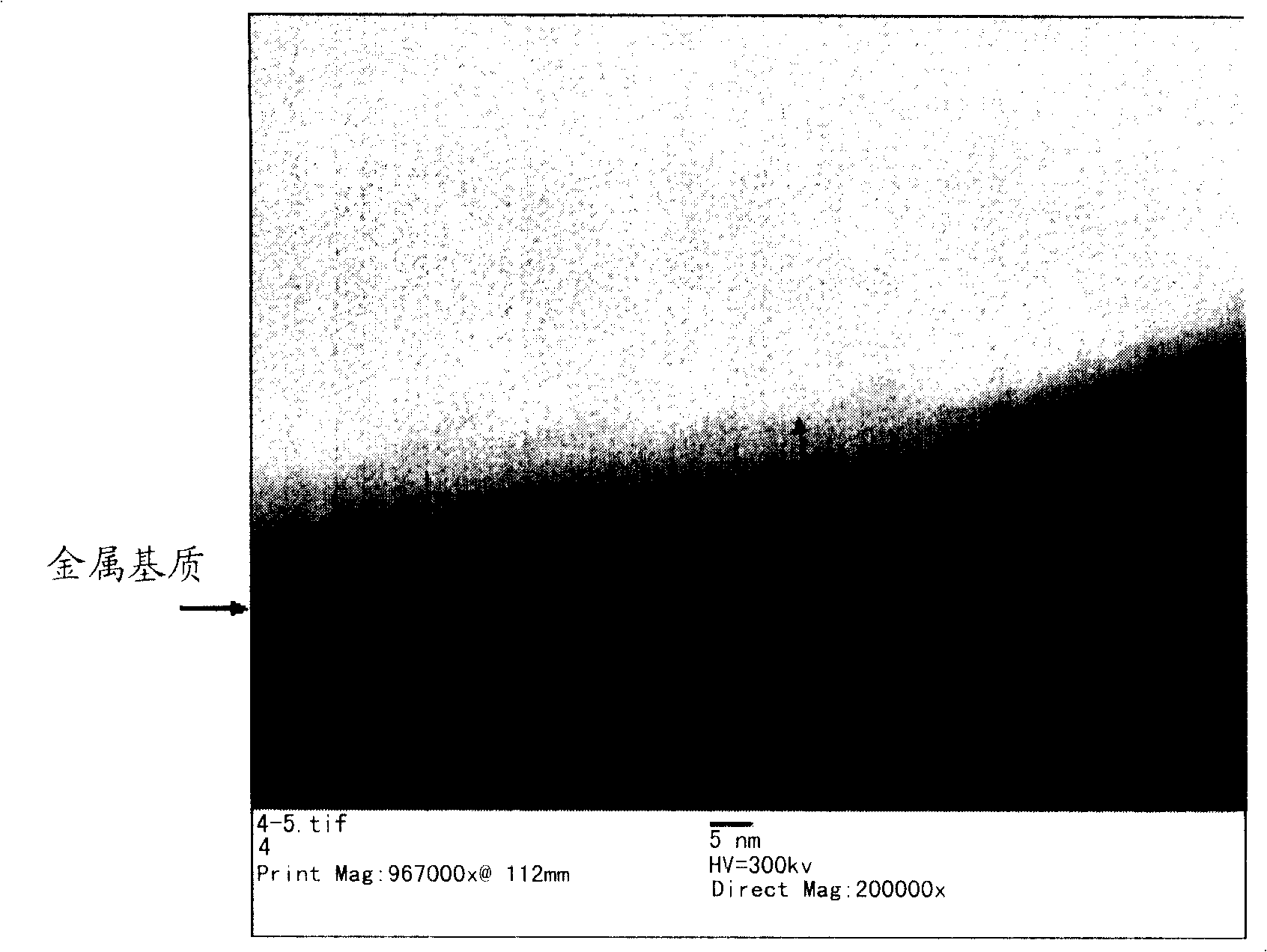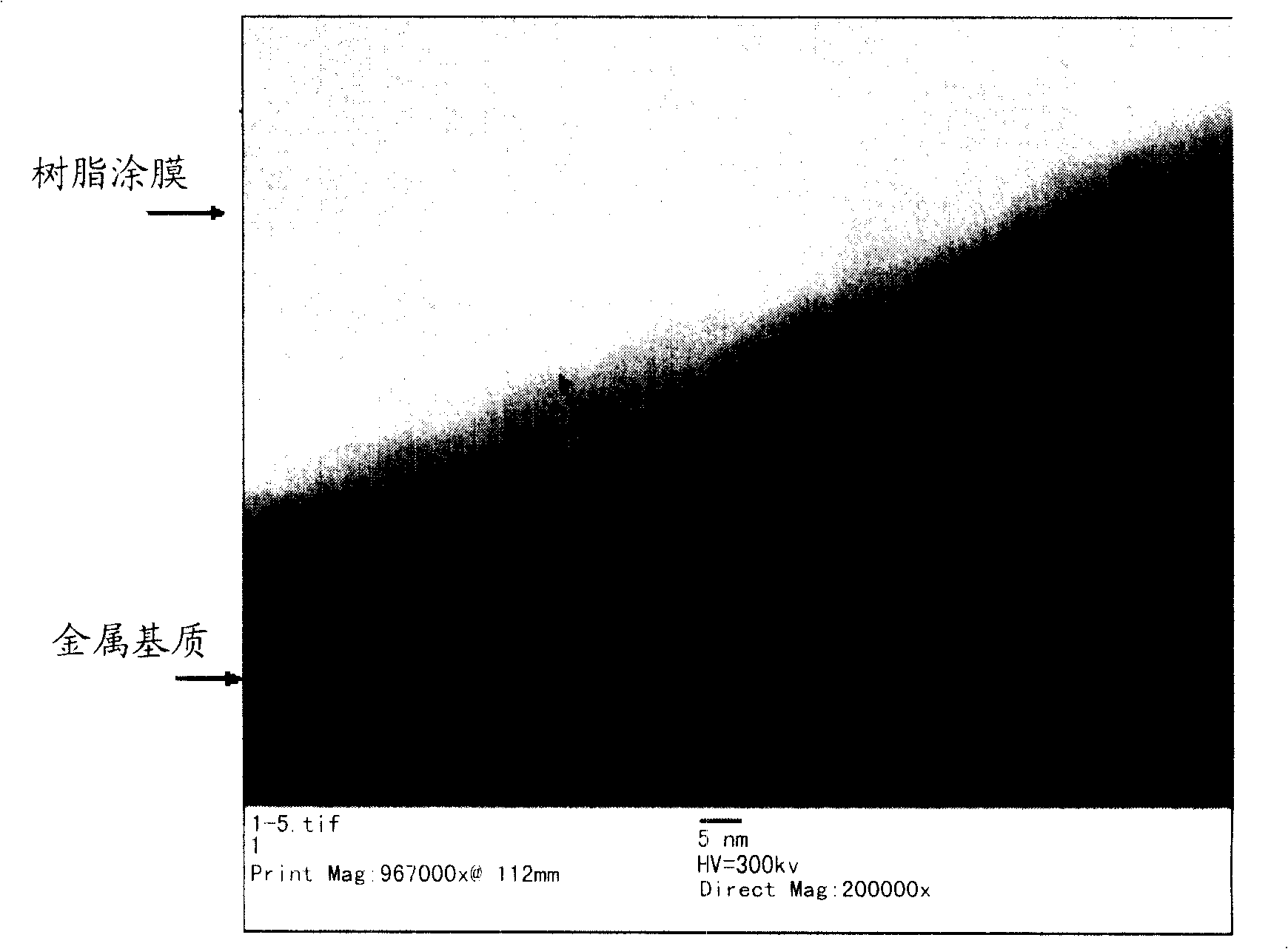Novel composite chemical-conversion coating, multilayered coating film including the same, and method of forming multilayered coating film
A multi-layer coating and coating technology, which is applied in the field of cold-rolled steel sheets to achieve the effect of a small amount of treatment reagents
- Summary
- Abstract
- Description
- Claims
- Application Information
AI Technical Summary
Problems solved by technology
Method used
Image
Examples
preparation Embodiment 1
[0075] Preparation Example 1 (the preparation of the rare earth metal salt aqueous solution used in the first step is implemented example)
[0076] A predetermined amount of rare earth metal carbonate or hydroxide is dispersed in ion-exchanged water in a reaction vessel equipped with a stirrer, a cooling tube and a thermometer, and then, while heating and stirring, is added as the metal salt An acid such as nitric acid or acetic acid of the counter ion was dissolved to prepare an aqueous solution of the rare earth metal salt with a metal ion concentration of 5%. After adjusting the solution pH of the obtained solution to 4-7 with an ammonia solution or an aqueous sodium hydroxide solution, a treatment solution is prepared by diluting it to a predetermined concentration with ion-exchanged water. Tables 2 and 3 below list the rare earth conversion coating solutions used in the tests, the acid species of the salt compounds, and the conductivity of the conversion coating solut...
preparation Embodiment 2
[0077] Preparation Example 2 (preparation of basic resin with cationic groups)
[0078] 2400 parts of bisphenol A type epoxy resin (trade name: DER-331J, manufactured by Dow Chemical Co., epoxy equivalent 188), 141 parts of methanol, 168 parts of methyl isobutyl ketone and 0.5 part of dibutyltin dilaurate Add to reaction vessel equipped with stirrer, decanter, nitrogen inlet, thermometer and dropping funnel. And the mixture was stirred at 40°C to dissolve uniformly. Then, when 320 parts of 2,4- / 2,6-toluene diisocyanate (a mixture of 80 / 20 by weight) was added dropwise over 30 min, heat was generated and the temperature of the mixture rose to 70°C. 5 parts of N,N-dimethylbenzylamine was added thereto, the temperature of the system was raised to 120°C, and the reaction was continued at 120°C for 3 hours until an epoxy equivalent of 500 while distilling off methanol. In addition, 644 parts of methyl isobutyl ketone, 341 parts of bisphenol A and 413 parts of 2-ethylhexanoic ac...
preparation Embodiment 3
[0079] Preparation Example 3 (Preparation of Curing Agent for Electrodeposition Coating Composition)
[0080] 222 parts of isophorone diisocyanate are added to the reaction vessel equipped with stirrer, nitrogen inlet pipe, cooling pipe and thermometer, and diluted with 56 parts of methyl isobutyl ketone, then add 0.2 part of butyltin laurate, the temperature After raising to 50°C, 17 parts of methyl ethyl ketoxime was added so that the temperature of the contents did not exceed 70°C. The reaction mixture was kept at 70° C. for 1 hour until the infrared absorption spectrum was substantially free of isocyanate residue absorption, and then the mixture was diluted with 43 parts of n-butanol to obtain the target blocked isocyanate curing agent solution (70% solid content).
PUM
| Property | Measurement | Unit |
|---|---|---|
| thickness | aaaaa | aaaaa |
| thickness | aaaaa | aaaaa |
Abstract
Description
Claims
Application Information
 Login to View More
Login to View More - R&D
- Intellectual Property
- Life Sciences
- Materials
- Tech Scout
- Unparalleled Data Quality
- Higher Quality Content
- 60% Fewer Hallucinations
Browse by: Latest US Patents, China's latest patents, Technical Efficacy Thesaurus, Application Domain, Technology Topic, Popular Technical Reports.
© 2025 PatSnap. All rights reserved.Legal|Privacy policy|Modern Slavery Act Transparency Statement|Sitemap|About US| Contact US: help@patsnap.com



